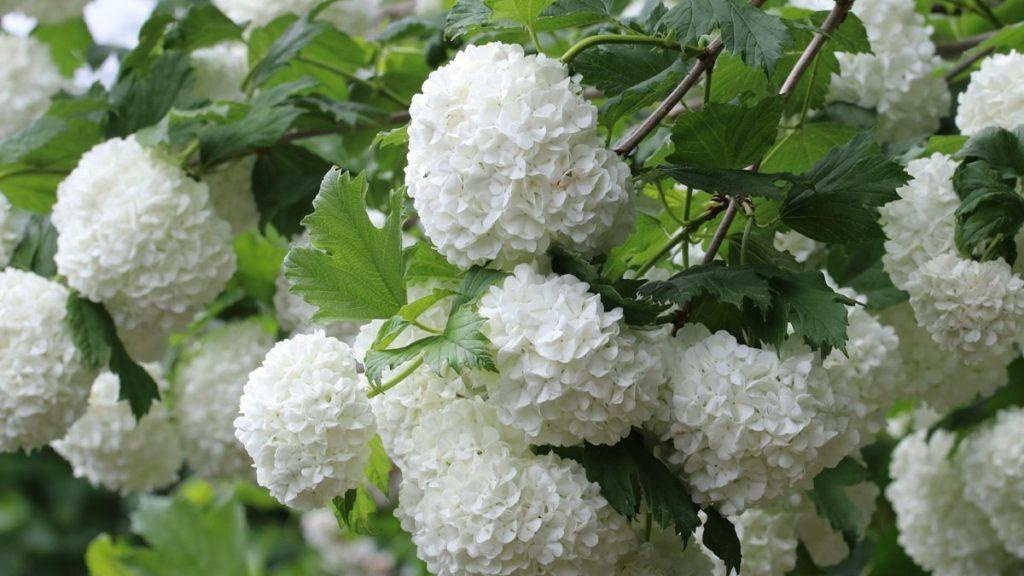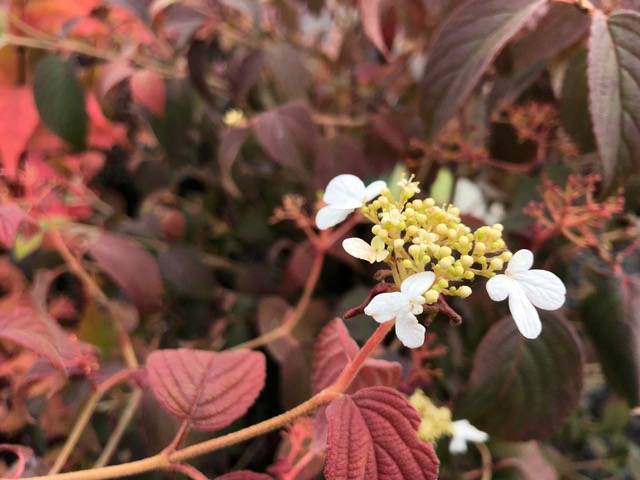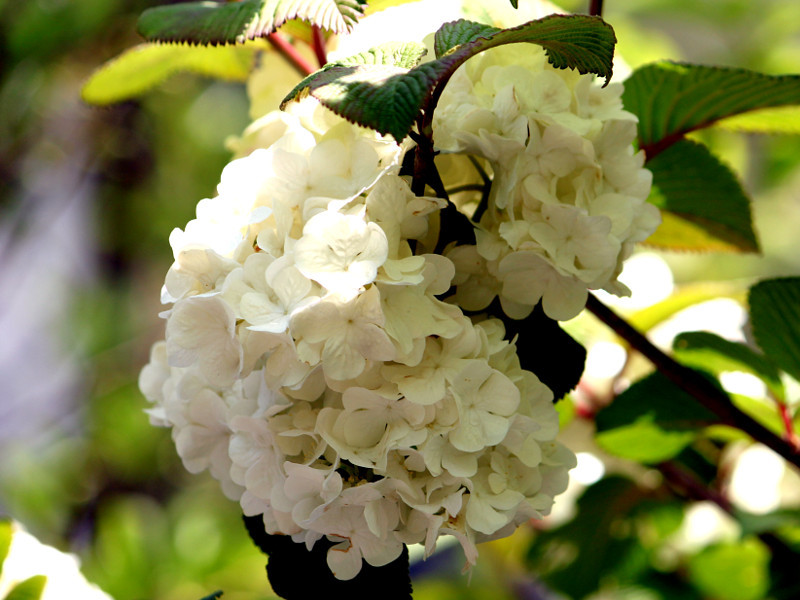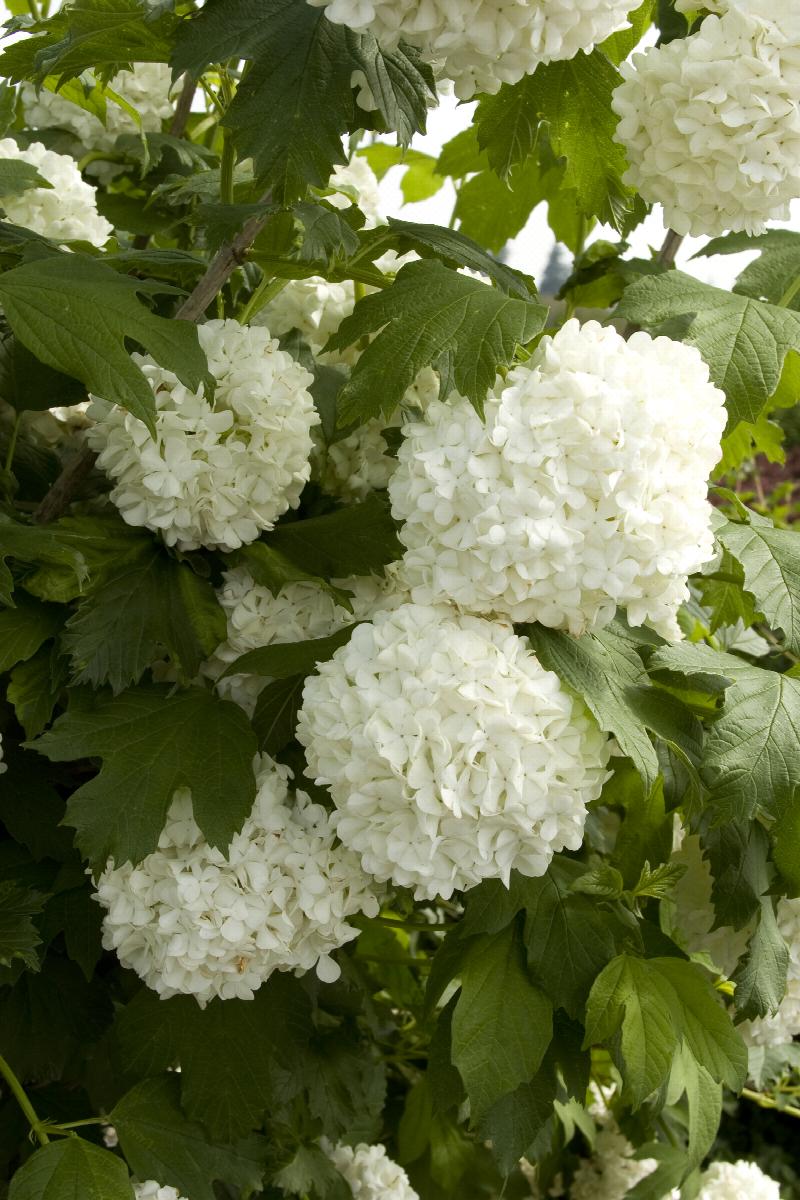How To Grow And Care For Eastern Snowball Viburnum
Eastern Snowball Viburnum (Viburnum opulus sterile) is a beautiful and versatile shrub that is easy to grow and care for. It is known for its large, white snowball-shaped flowers that bloom in late spring. The flowers are fragrant and attract butterflies and other pollinators. Eastern Snowball Viburnum is also a good choice for wildlife habitat, as it provides food and shelter for birds, bees, and other animals.
Eastern Snowball Viburnum is hardy in USDA zones 3-9. It prefers full sun to partial shade and moist, well-drained soil. It is tolerant of a wide range of soil pH levels. Eastern Snowball Viburnum is drought-tolerant once established, but it will benefit from regular watering during the first year after planting.
To plant an Eastern Snowball Viburnum, dig a hole that is twice as wide and as deep as the root ball of the shrub. Amend the soil with compost or other organic matter. Place the shrub in the hole and backfill with soil, tamping down gently. Water the shrub thoroughly.
Eastern Snowball Viburnum does not require a lot of fertilizer. A light application of fertilizer in the spring will help to promote new growth and flowering. Do not fertilize after mid-summer, as this can encourage late-season growth that may not have time to harden off before winter.
Eastern Snowball Viburnum does not need to be pruned heavily. However, you may want to remove dead, damaged, or diseased branches in the spring. You can also prune the shrub to shape it or to reduce its size. If you prune in the spring, be sure to do it before the flowers bloom.
Eastern Snowball Viburnum is a relatively pest- and disease-free plant. However, it may be susceptible to aphids, scale, and powdery mildew. If you see any pests or diseases, treat them immediately with an appropriate insecticide or fungicide.
Eastern Snowball Viburnum is a beautiful and low-maintenance shrub that is perfect for any garden. With proper care, it will thrive for many years to come.
The eastern snowball viburnum is a beautiful and hardy shrub that is sure to add a touch of elegance to your landscape. It produces large, white snowball-like flowers in the spring, and its foliage turns a brilliant red in the fall. Eastern snowball viburnums are relatively easy to care for and can tolerate a wide range of soil conditions.
If you are interested in learning more about eastern snowball viburnums, please visit Home Gardening. This website provides detailed information on the plant's care, planting, and propagation. You can also find photos and videos of eastern snowball viburnums in bloom.
FAQ of eastern snowball viburnum
- What is an eastern snowball viburnum?
An eastern snowball viburnum is a deciduous shrub that is native to North America. It is known for its large, white flowers that bloom in late spring or early summer. The flowers are typically about 2 inches in diameter and are arranged in clusters that can reach up to 6 inches in diameter. Eastern snowball viburnums can grow up to 10 feet tall and wide, and they prefer full sun to partial shade. They are relatively easy to care for and are drought-tolerant.
- How do I plant an eastern snowball viburnum?
The best time to plant an eastern snowball viburnum is in the spring or fall. Choose a location that receives full sun to partial shade and has well-drained soil. The soil should be amended with compost or other organic matter before planting. Dig a hole that is twice as wide and as deep as the root ball of the plant. Place the plant in the hole so that the top of the root ball is level with the soil surface. Backfill the hole with soil and water the plant thoroughly.
- How do I care for an eastern snowball viburnum?
Eastern snowball viburnums are relatively easy to care for. They need to be watered regularly, especially during the first year after planting. They also need to be fertilized once a year in the spring with a balanced fertilizer. Eastern snowball viburnums do not need to be pruned often, but they can be pruned in the spring to remove dead or damaged branches.
- Why is my eastern snowball viburnum not blooming?
There are a few reasons why your eastern snowball viburnum might not be blooming. One possibility is that it is not getting enough sunlight. Eastern snowball viburnums need at least six hours of sunlight per day to bloom properly. Another possibility is that the plant is not getting enough water. Eastern snowball viburnums need to be watered regularly, especially during the summer months. Finally, the plant may not be getting enough nutrients. Eastern snowball viburnums should be fertilized once a year in the spring with a balanced fertilizer.
- How do I propagate an eastern snowball viburnum?
Eastern snowball viburnums can be propagated by softwood cuttings. Softwood cuttings are taken from new growth in the spring or early summer. To take a softwood cutting, cut a 4-6 inch section of new growth from the plant. Make the cut just below a leaf node. Remove the leaves from the bottom half of the cutting and dip the end in rooting hormone. Plant the cutting in a pot filled with a mixture of peat moss and perlite. Keep the soil moist and the cutting in a warm, sunny location. The cutting should root in about 4-6 weeks.
- How do I protect my eastern snowball viburnum from pests and diseases?
Eastern snowball viburnums are relatively resistant to pests and diseases. However, they can be susceptible to aphids, scale, and spider mites. If you notice any pests or diseases on your plant, you can treat them with an insecticidal soap or neem oil. Eastern snowball viburnums can also be susceptible to powdery mildew. If you notice powdery mildew on your plant, you can treat it with a fungicide.








Post a Comment for "How To Grow And Care For Eastern Snowball Viburnum"